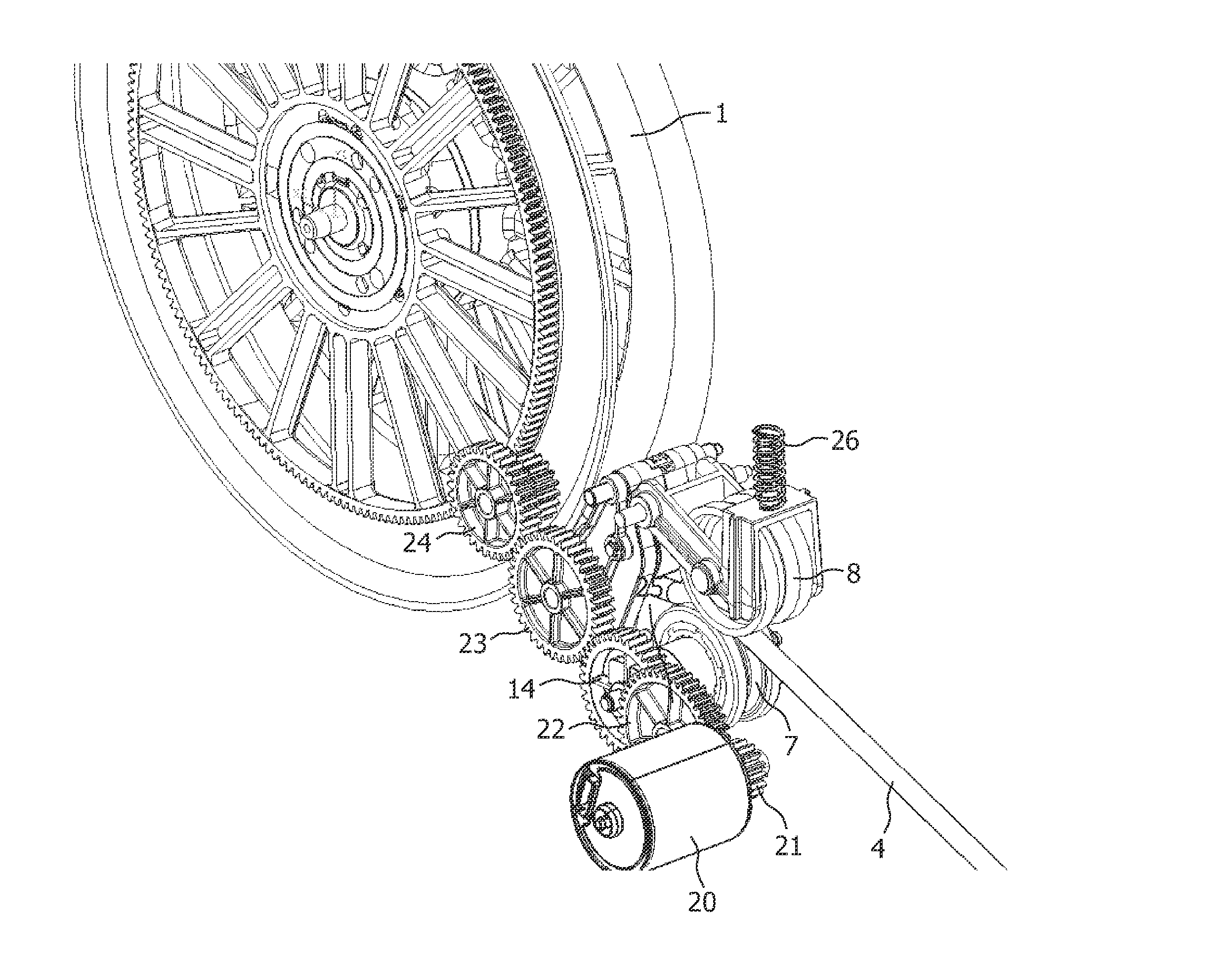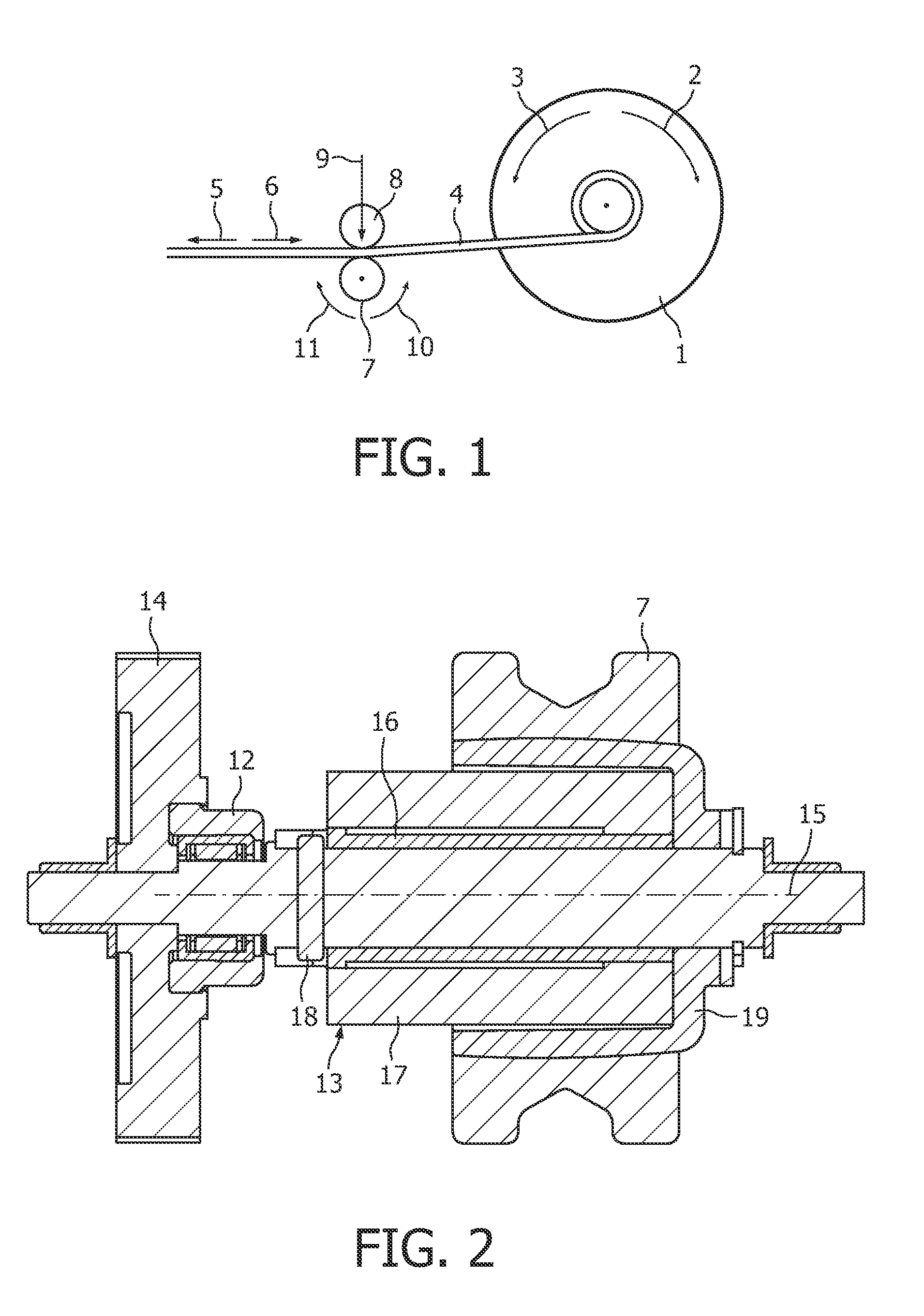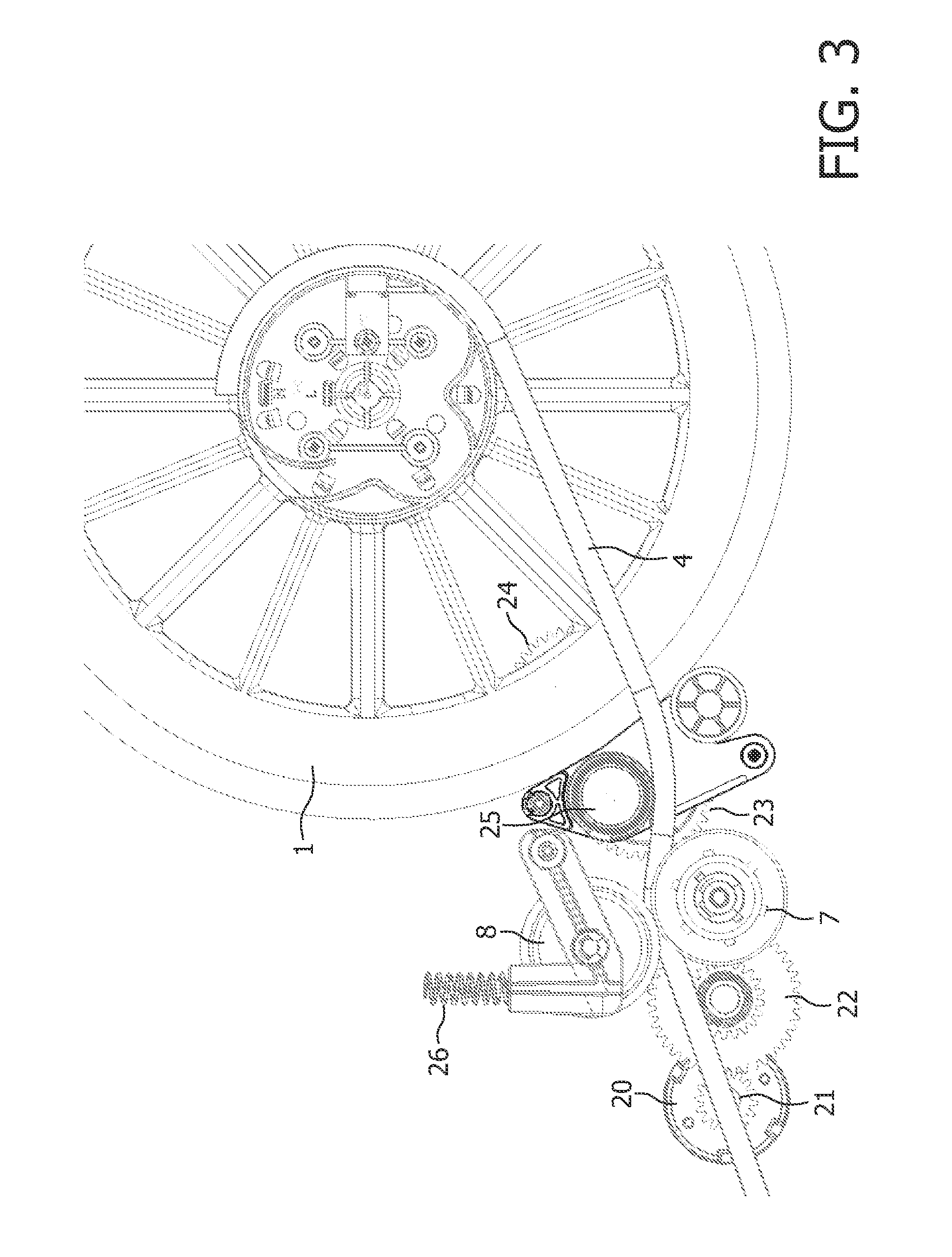Paying out and retracting an electric power cord
a technology for electric power cords and devices, which is applied in the field of can solve the problems of comparatively complicated devices for paying out and retracting electric power cords according to u.s. pat. no. 4,736,826
- Summary
- Abstract
- Description
- Claims
- Application Information
AI Technical Summary
Benefits of technology
Problems solved by technology
Method used
Image
Examples
Embodiment Construction
[0024]FIG. 1 shows a cord winding reel 1 that is driven by an electric motor (not shown) in the cord paying out direction (arrow 2) or in the cord retraction direction (arrow 3), such that the electric power cord 4 is unwinding or winding on the reel 1, respectively. Arrow 5 and arrow 6 indicate the displacement of the cord 4 in the paying out direction and in the retraction direction, respectively. A drive element 7, 8 is present for engaging the cord 4 at some distance from the reel 1. The drive element comprises a drive wheel 7 and a support wheel 8, the support wheel 8 pressing the cord 1 against the rotating surface of the drive wheel 7, as is indicated with arrow 9, so that there is no slip between the cord 4 and the drive wheel 7.
[0025]When the electric motor drives the reel 1 in the paying out direction (arrow 2), the cord 4 has to be pulled away from the cord winding reel 1 by the drive element 7, 8. In order to exert a predetermined pulling force on the cord 4, the drive e...
PUM
 Login to View More
Login to View More Abstract
Description
Claims
Application Information
 Login to View More
Login to View More - R&D
- Intellectual Property
- Life Sciences
- Materials
- Tech Scout
- Unparalleled Data Quality
- Higher Quality Content
- 60% Fewer Hallucinations
Browse by: Latest US Patents, China's latest patents, Technical Efficacy Thesaurus, Application Domain, Technology Topic, Popular Technical Reports.
© 2025 PatSnap. All rights reserved.Legal|Privacy policy|Modern Slavery Act Transparency Statement|Sitemap|About US| Contact US: help@patsnap.com



